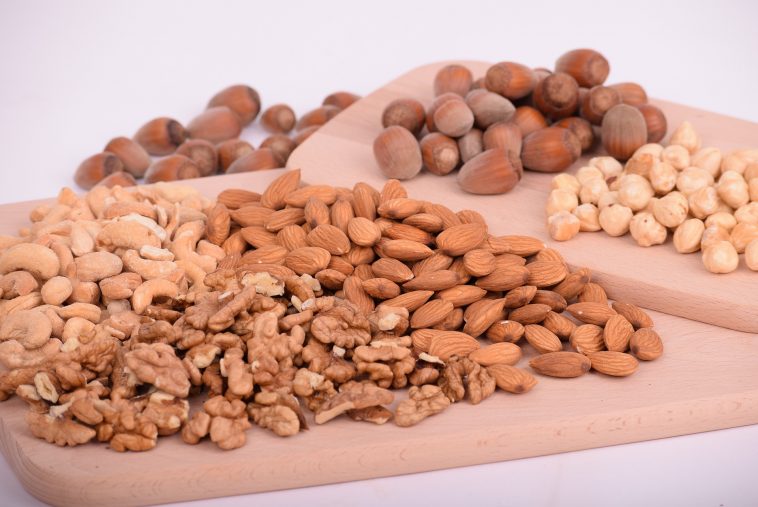The global tree nut production industry continues to steadily grow corresponding to increasing demand. The Tree Nuts Market Outlook, from the Future Market Insights states that the global tree nuts market is projected to create an absolute dollar opportunity of more than US$60 billion through 2032.
The demand for tree nuts is estimated to reach US$18 billion by the end of 2022, expanding at a remarkable compound annual growth rate (CAGR) of nearly 9% to 10% during the forecast period from 2022 to 2032. Demand for tree nuts is contributed to the significant increase in cardiovascular diseases that calls for diagnostic and treatment supplements from tree nuts.
The nuts assist in maintaining cholesterol levels, reducing blood pressure, and enhancing heart health. It is increasingly being consumed by a health-conscious population, which is in turn, bolstering the demand in the global market. On the other hand, the growing incidence of allergies related to the consumption of tree nuts such as abdominal cramps, itching in the throat and mouth, nausea, shortness of breath, runny nose, and difficulty swallowing, are limiting global tree nuts market growth.

Almonds lower systolic blood pressure, protecting against heart disease. (Source: Pixabay by Shiuli Debnath)
Also, high volatility in the cost of tree nuts and increasing availability of low-cost alternatives such as hemp seeds, sunflower seeds, sesame seeds, and other alternatives are also contributing to restricting their market growth. Hazelnut is grown under humid and temperate climatic conditions due to regular precipitation demand requiring an average annual total precipitation of 755 mm. In some cases, they may need supplementary irrigation. They do well in the 13 to 16 °C temperature range. Planting densities average 400 to 500 trees per hectare for annual yields of 2,5 to 3,5 metric tonnes per hectare.
They are produced on a fair scale in Cameroon and South Africa. Besides their use in the culinary industry, they help decrease blood fat levels, regulate blood pressure and inflammation, and improve blood sugar levels. The pecan nut tree does quite well subtropical areas, with short, cold winters and long, very hot summers. Low temperatures and even frost during June to August are required for successful budding and flower formation. Plantations grow 100 trees per hectare yielding 1 to 2,5 metric tonnes. They also have cholesterollowering properties, and the trees produce strong timber for furniture and flooring.
They are grown extensively and less extensively in Zimbabwe and South Africa. Pecans are a good source of calcium, magnesium, and potassium, which help lower blood pressure. Pistachios require long, hot, dry summers and chilling in the winter, but do not tolerate ground that freezes. They require approximately one thousand accumulative hours of temperature at or below 7,2 °C during dormancy. The environment needs to be arid, thus pistachio trees do not do well in areas of high humidity. Tree planting density stands at 272 trees per hectare producing a yield of 2 to 2,7 tonnes per hectare. Peak production occurs when the tree is between 10 to 15 years old. They are grown in Morocco, Cote d’Ivoire, and Madagascar. Pistachios have a high content of fibre, minerals, and unsaturated fat that can help keep blood sugar, blood pressure, and cholesterol in check.

Pistachios can yield up to 2,7 tonnes per hectare. (Source: Pixabay by erhan t)
Almonds requires slightly hot summer temperatures ranging from 30 to 35 °C and cool winters for plant growth and kernel filling. Unopened blossoms can withstand cold up to -2.2 °C, but blossoms at petal fall stage are damaged at 0,5 to 1,1 °C. Their planting density can be at 6 X 6 metre distances result in 270 trees per hectare, while 5 X 5 metre distances result in 330 trees per hectare. The yield per hectare can be between 1 to 2,04 metric tonnes of shelled nuts. They are mostly grown in Libya, Algeria, Morocco, Cote d’Ivoire, and Burkina Faso. The nuts can help lower systolic blood pressure, which offers even more protection against heart disease. Walnut is one of the temperate climate fruit varieties, so it is very sensitive to high temperature and freezing colds. It does not give good results in high wind areas. Temperature higher than 40 °C in summer, causes sun burns on the green shells and leaves, and the nut inside shrinks. Walnut trees prefer regions with long and dry summers that are higher than 1 700 metres above see level.

Walnut trees have the potential to produce nut yields of 10 tonnes per hectare. (Source: Pixabay by Manfred Zajac)
They need long seasons to ripen their fruits. The typical planting distances when growing walnut trees for wood is 2,4 X 2,4 metres at 1 682 trees per hectare. When growing walnut trees for nuts it is 5,2 X 5,2 metres resulting in 373 trees per hectare. Yields are around 10 metric tonnes per hectare. In the Africa they are grown in Egypt and Morocco. Leading players in the tree nuts market are Golden Peanut Company, LLC, Sun Valley Nut, LLC, Felix GmbH & Co. KG, Poindexter Nut Company, Inc., Summit Premium Tree Nuts, Plantabul Ltd., Tree Nuts International, and Hines Nut Company. As global market trends evolve these leading participants are directing their attention to capacity expansion, collaboration, and mergers and acquisitions strategies to gain the edge in the highly competitive market.









